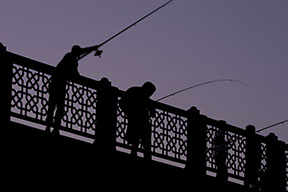Understanding exposure basics is crucial to making a great photograph. Invest some time to understand the three ingredients in the exposure definition: ISO, aperture and shutter speed. Don’t be intimidated! The concepts are not hard, and once you get your head around them, you’re on your way to great images!
Exposure Definition
Exposure values are all about how much light reaches your film, or in the digital world, your sensor. The end result is how bright or dark your final image is. Exposure is a combination of the luminance (available light in the scene, both natural and artificial), and the following settings on your camera: ISO, shutter speed and aperture.
The best analogy I’ve heard for understanding exposure is to think of filling a bucket with water. You can either pour a lot of water in quickly, or a trickle a little in over a long time. Either way, the bucket ends up full. Think of a full bucket as a correct exposure. Think of the water pouring in as the light falling on the film or sensor.
How long you let the water pour into the bucket is equivalent to how long you leave the shutter open for, which is controlled by the shutter speed.
Whether the water gushes or trickles in is equivalent to how much light is allowed to pass through the shutter at once, which is controlled by the aperture (the opening in the lens).
Finally, think of the size of the bucket as equivalent to the sensitivity of the film or sensor, which is controlled by the ISO. A large bucket needs more water to fill it. A less sensitive film needs more light to expose it correctly.

© Julie Waterhouse Photography
Let’s look at each aspect in understanding exposure in more detail.
Next, read about the exposure values of ISO, shutter speed or aperture.